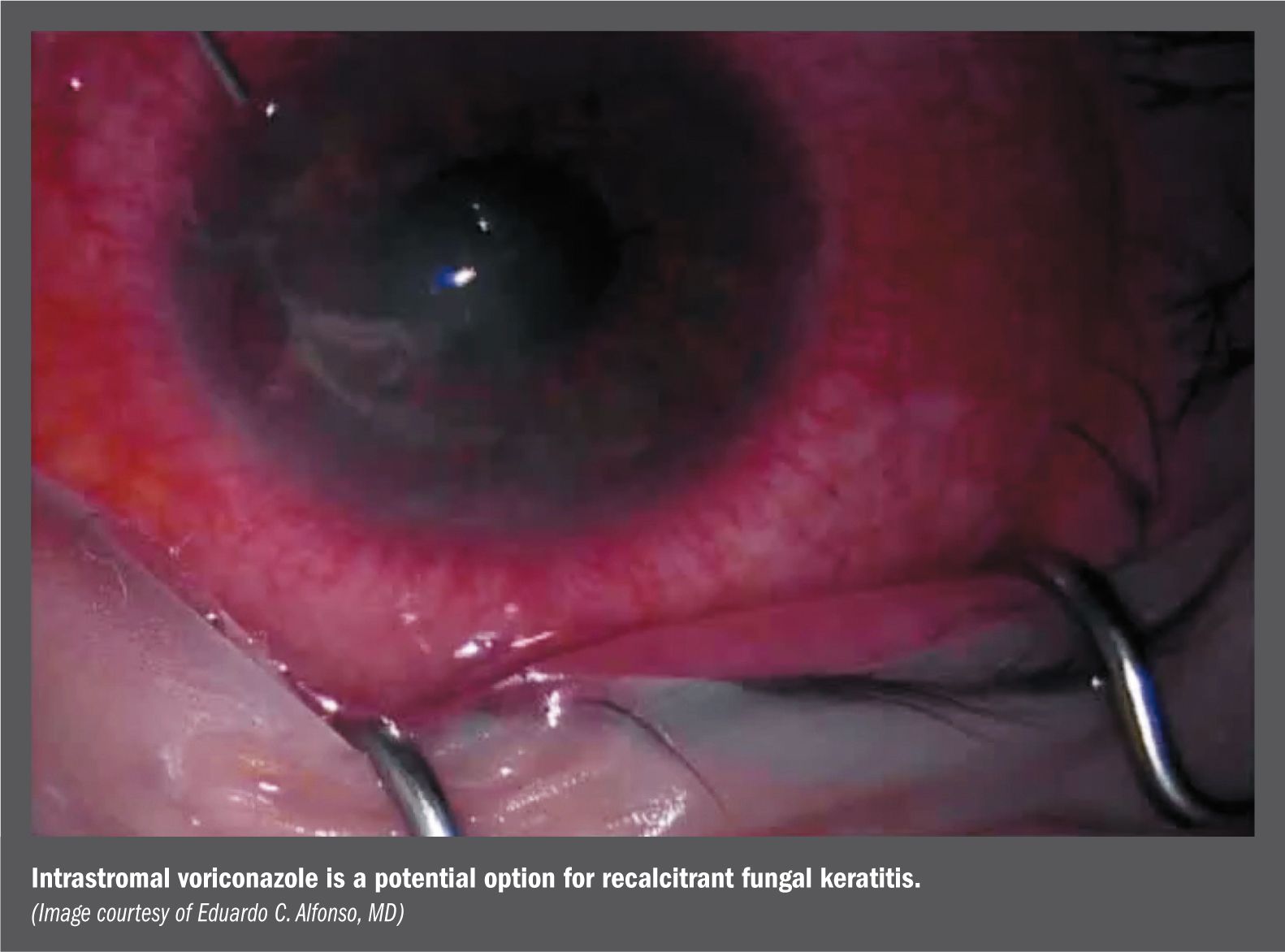Article
Diagnosis of fungal keratitis requires a deeper look-beyond the slit lamp
Author(s):

Fungal keratitis requires an armamentarium of diagnostic and treatment approaches
Natamycin may be the drug of choice for filamentous keratitis, and intrastromal voriconazole is a potential option for recalcitrant fungal keratitis, according to Eduardo C. Alfonso, MD. When physicians use only a slit lamp to potentially diagnose ulcerative keratitis, it can be easy to miss the diagnosis, said Dr. Alfonso, professor and chairman, Department of Ophthalmology; Kathleen and Stanley J. Glaser Chair in ophthalmology; and director, Bascom Palmer Eye Institute, University of Miami Miller School of Medicine, Miami.
“Clinical predictability is shown to be quite off when we talk specifically about keratitis. It can be wrongly diagnosed by slit lamp and history close to 55% of the time. I hope that makes you a little uncomfortable,” said Dr. Alfonso, citing a 2007 study from Dahlgren et al.1
“Certainly, in today’s world in the United States, most patients come to us pre-treated. It was shown that when you are pre-treated, detecting at the slit lamp becomes even worse,” Dr. Alfonso said. “Unless we have artificial intelligence to analyze the clinical data, we won’t be doing a favor to our patients by using just a clinical diagnosis.”
Gold standard testing
The use of an ocular microbiology lab is a major boost to diagnose fungal keratitis. Dr. Alfonso discussed the gold standard of using smear and cultures. Ninety-one percent of smears correlate with cultures, he said. Other approaches to help diagnose fungal keratitis have proven to be useful, including molecular analyses, confocal microscopy, and anterior segment optical coherence tomography (OCT).
Dr. Alfonso shared images from an anterior segment OCT in which a patient had fungal keratitis. “Here we see fungal keratitis and the importance of OCT,” he said. “We can see how deep the infiltrate is.” The availability of this technology helps ophthalmologists better plan their surgical strategy.
With higher-resolution OCT, they may even be able to see the organism itself, he said. Regarding treatment, Dr. Alfonso shared evidence that natamycin “continues to be the best drug for the bug,” he said. “When we do a molecular analysis, natamycin seems to be better against Fusarium solani compared with voriconazole,” he said.
That said, intrastromal injections of voriconazole are a potentially good adjuvant therapy until the ulcer is controlled.
Treatment routes

When Fusarium solani is present, it may have to be treated with surgery. “It may not respond well to natamycin, especially in younger individuals who have this disease,” Dr. Alfonso said.
“You may want to proceed with keratoplasty.” Studies have found that early lamellar keratoplasty has been found to eradicate infection in 92.7% of patients, he said. Corneal scrapings, crosslinking, and the use of photodynamic therapy are other treatments for fungal keratitis, Dr. Alfonso said.
He highlighted the case of a man with severe keratitis last year in whom photodynamic therapy was used. It prevented surgeons from having to perform a penetrating keratoplasty.
Disclosures:
Eduardo C. Alfonso, MDE: ealfonso@miami.edu
This article was adapted from Dr. Alfonso’s presentation during Cornea Subspecialty Day at the 2017 meeting of the American Academy of Ophthalmology. Dr. Alfonso is an advisor for Alcon Laboratories and Bio-Tissue.
References:
1. Dahlgren MA, Lingappan A, Wilhelmus KR. The clinical diagnosis of microbial keratitis. Am J Ophthalmol. 2007;143:940-944.
Newsletter
Don’t miss out—get Ophthalmology Times updates on the latest clinical advancements and expert interviews, straight to your inbox.




